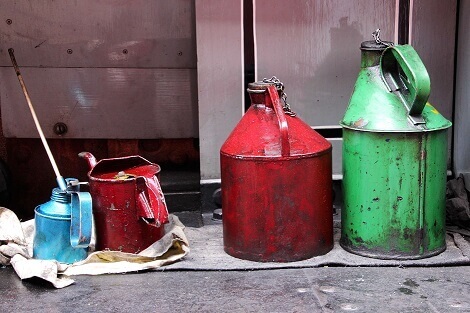Grease Overview: How to Pump Grease
What is Grease?

Grease, although it can appear solid in many applications, functions as a lubricating fluid applied to components. Its consistency varies, ranging from semi-fluid, akin to oil, to hard, where it cannot flow and may leave permanent indentations.
Formulated from an oil base, grease incorporates thickeners and additives to achieve its desired consistency. Unlike conventional viscosity measurements, grease is assessed using a scale devised by the National Lubricating Grease Institute (NLGI), which spans from 000 to 6.
Viscosity: 000 to 6
SG: 0.85 - 0.95
NLGI consistency numbers | |||
NLGI number | ASTM worked (60 strokes) | Appearance | Food Consistency Analogy |
000 | 445-475 | Fluid | Cooking Oil |
00 | 400-430 | Semi-Fluid | Apple Sauce |
0 | 355-385 | Very Soft | Brown Mustard |
1 | 310-340 | Soft | Tomato Paste |
2 | 265-295 | "Normal" Grease | Peanut Butter |
3 | 220-250 | Firm | Vegetable Shortening / Lard |
4 | 175-205 | Very Firm | Frozen Yogurt |
5 | 130-160 | Hard | Smooth Pâté |
6 | 85-115 | Very Hard | Cheddar Cheese |
Source: Rudnick, Leslie R. (2005). Synthetics, Mineral Oils, and Bio-Based Lubricants: Chemistry and Technology (Chemical Industries). CRC. p. 468.ISBN 1-57444-723-8.
Pump Options for Grease Transfer Applications
Grease pumps are typically one of two forms. One requires a pump to be immersed within the container and uses a follower plate to level indentations within the fluid caused by the pump ensuring the pump always has a flooded suction . A follower plate is used in conjunction with a drum cover.
The second form of grease pump is a slow moving positive displacement pump which has a flooded suction. Grease is typically applied through a grease pump gun or nozzle to equipment requiring lubrication.
View our range of Grease Pumps
What to Consider When Selecting a Pump for the Transfer of Grease
Pumping grease for industrial applications requires careful consideration of several factors to ensure optimal performance and longevity of both the grease and the pumping equipment. Viscosity, temperature, and pump compatibility are among the key considerations that engineers and maintenance personnel must take into account.
Viscosity: This plays a crucial role in the pumping process as it directly affects the flow characteristics of the grease. Grease viscosity varies depending on factors such as base oil type, thickener type, and additives. Choosing a pump with the appropriate viscosity rating ensures efficient pumping without causing excessive strain on the equipment, recirculation within the unit or lower output flow or compromising the integrity of the grease. It is essential to match the viscosity of the grease with the pump's capabilities to maintain consistent flow rates and prevent issues like cavitation or pump wear.
Temperature: Grease viscosity is highly sensitive to temperature changes, with viscosity typically decreasing as temperature increases. When operating in extreme temperatures, it's important to select a pump that can handle the anticipated temperature range without affecting its performance or the quality of the grease. Additionally, some greases may require preheating or cooling to achieve the desired viscosity for pumping, necessitating the use of specialised equipment such as heating jackets on pumps or systems to regulate temperature effectively such as trace heating.
Type of Grease: Choosing the correct pump to the type of grease being pumped is paramount to prevent contamination, degradation, or chemical reactions that could compromise the performance of both the grease and the pump. Different types of greases contain various additives and thickeners that may react unfavorably with certain pump materials or components. Conducting compatibility tests and consulting with grease manufacturers can help identify the most suitable pump materials and construction for the specific type of grease being used.
Maintenance: Regular maintenance and monitoring are essential for ensuring the efficient operation of grease pumping systems, so the location of the pump within your processing plant and its accessibility need to be carefully considered. This includes inspecting pump components for wear or damage, monitoring grease quality and consistency, and adjusting operating parameters as needed to maintain optimal performance.
By carefully considering viscosity, temperature, and pump compatibility, industrial operators can maximise the reliability and productivity of their grease pumping operations while minimising downtime and maintenance costs.
To discuss your pump requirements with an application specialist get in touch.





